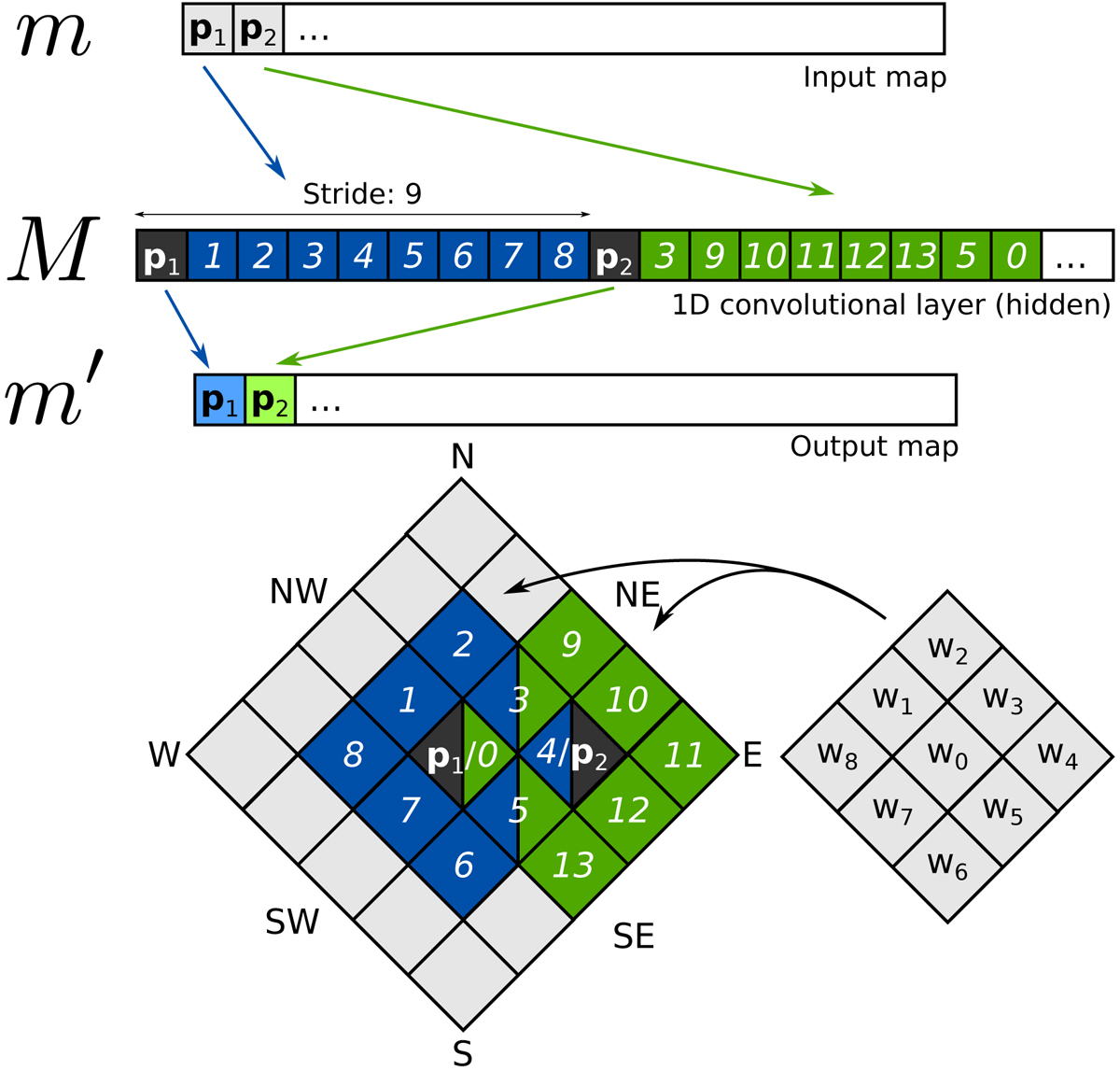Fig. 3.

Sketch of the convolution algorithm developed in this work. The elements p1 and p2 of the vector m correspond to two pixels on map (in this case 0 and 4). p1 and p2 are associated to nine elements each, in vector M. The first of this nine elements corresponds to the pixel itself, while the subsequent ones corresponds to its eight neighbors. The neighbors are visited, and unrolled in the M vector, following a clockwise order staring from the NW direction. The filter (in grey) is also unrolled in a nine element long vector, using the same convention. Convolution is then implemented as a standard 1D convolutional layer with a stride of 9, and the output is the m′ convolved vector (map), which has the same number of elements (pixels) as the input m. In the figure, numbers over the pixels do not represent the values of the pixels but their unique index: in practical applications, these indices will be those associated to an ordering scheme and a map resolution Nside. Colors are the same as in Fig. 1, to underline the similarity.
Current usage metrics show cumulative count of Article Views (full-text article views including HTML views, PDF and ePub downloads, according to the available data) and Abstracts Views on Vision4Press platform.
Data correspond to usage on the plateform after 2015. The current usage metrics is available 48-96 hours after online publication and is updated daily on week days.
Initial download of the metrics may take a while.


